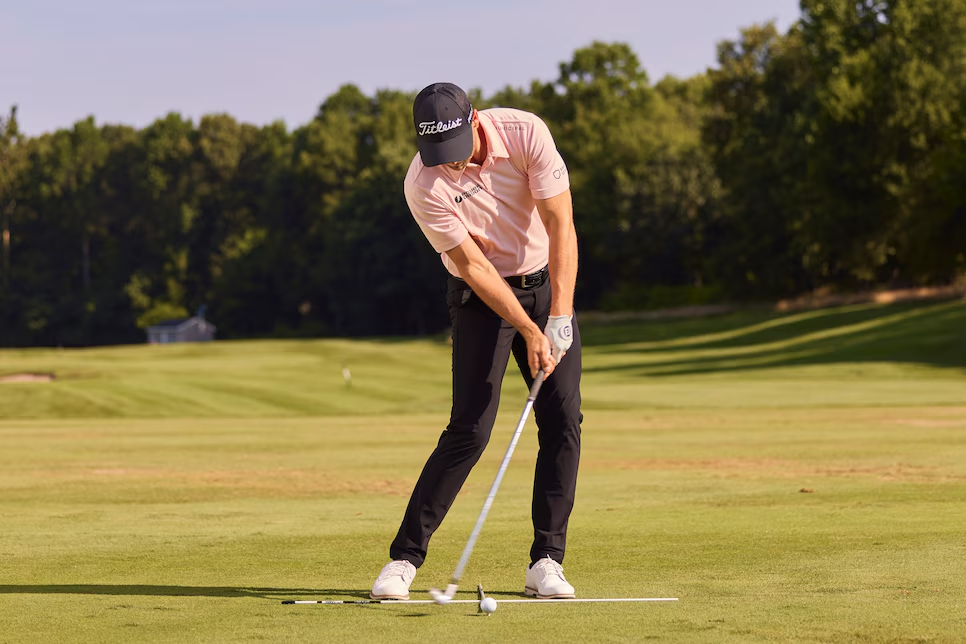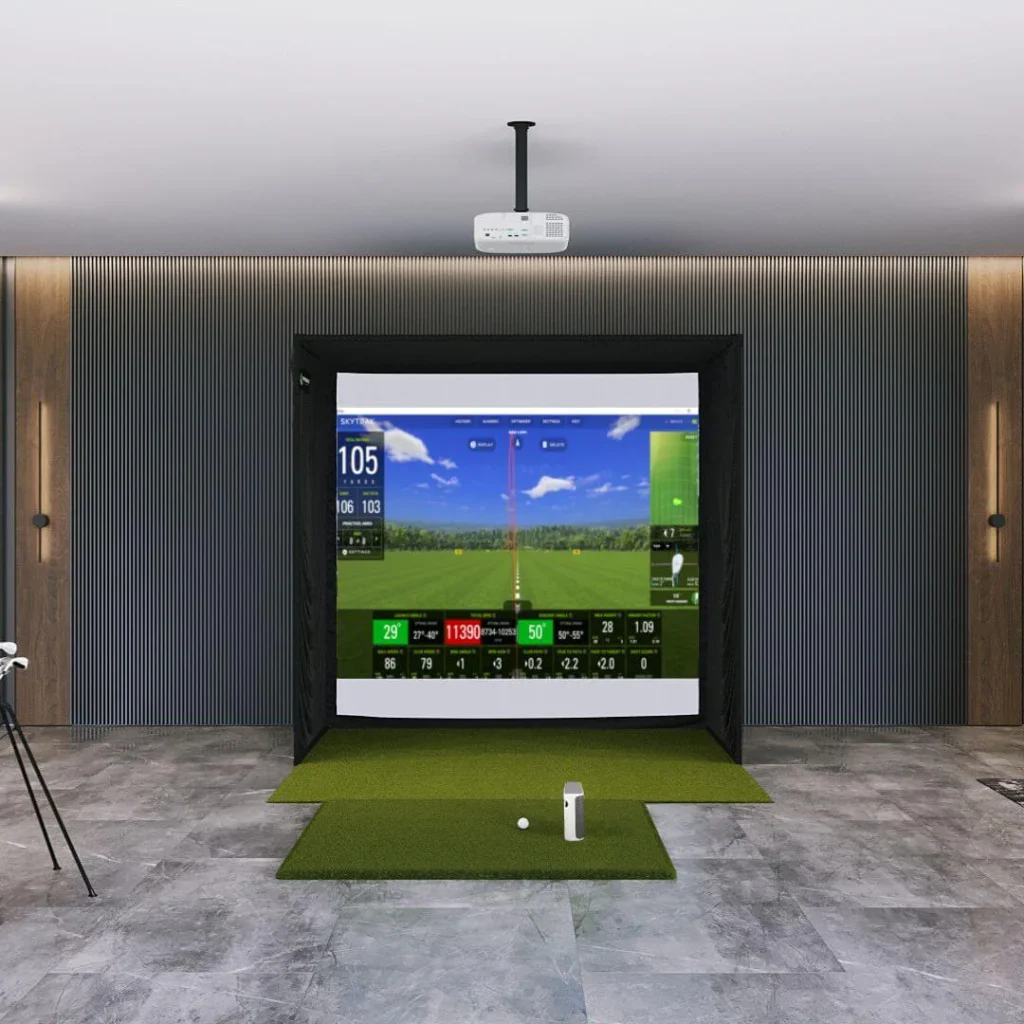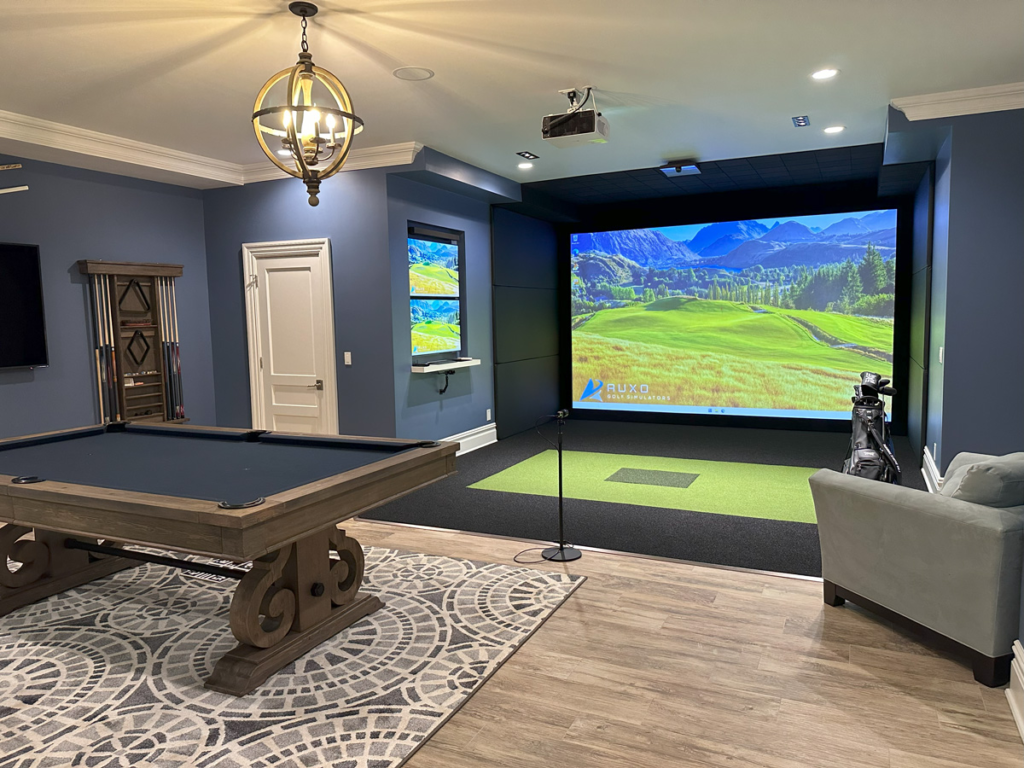Physical Address
304 North Cardinal St.
Dorchester Center, MA 02124
Physical Address
304 North Cardinal St.
Dorchester Center, MA 02124

Setting up a golf simulator at home is one of the best ways to practice consistently, refine your swing, and enjoy the game year-round. But creating the right setup requires more than just placing a launch monitor in a room and hitting balls into a net.
Many golfers underestimate how much space they actually need, leading to tracking errors, restricted swing movement, or even safety hazards. The choice of simulator, screen, and projector setup also plays a major role in the overall experience. Without proper planning, the investment might not deliver the realistic and immersive golf experience that players expect.
Whether setting up in a garage, basement, spare bedroom, or a dedicated golf studio, the key is getting the details right from the start. Understanding space requirements, selecting the right launch monitor, and making smart equipment choices all determine how effective the simulator will be.
This guide covers everything, from space needs and simulator recommendations to setup mistakes to avoid, ensuring the best possible results for any home golf setup.
Most golf simulator setups require at least 8 feet of ceiling height, 12-16 feet of room depth, and 9-12 feet of width for a comfortable swing. The exact space needed depends on the type of launch monitor, as radar-based systems require more depth than camera-based models.
A common mistake golfers make is underestimating space requirements. A room that seems large at first can feel restrictive once a full swing, launch monitor placement, and screen distance are factored in.
Ceiling height is often the biggest issue. Most setups need at least eight to nine feet, but taller golfers or those with high swing speeds should aim for ten feet. For lower ceilings, photometric launch monitors like SkyTrak+ or Uneekor EYE MINI are ideal since they sit in front of the golfer rather than behind.
Room depth is another key factor, especially for radar-based systems like TrackMan 4, Full Swing KIT, or FlightScope Mevo+, which need at least 16 feet to track full ball flight. For smaller spaces, Foresight Sports GC3 and Bushnell Launch Pro require less depth while still delivering accurate tracking.
Room width also impacts comfort and playability. Most setups need at least nine to ten feet for an unrestricted swing. Golfers who want both right- and left-handed playability should aim for at least twelve feet.
By ensuring proper space for height, depth, and width, golfers can avoid limitations and create an optimal home simulator experience.

The size of the room will ultimately determine which launch monitor is the best fit. Small spaces benefit from overhead-mounted or photometric launch monitors that don’t require additional depth behind the player. Larger spaces can accommodate radar-based systems that track full ball flight indoors and outdoors.
For limited space, SkyTrak+ remains one of the most reliable options. It requires less depth than radar-based systems, provides accurate ball data, and integrates well with simulator software. Uneekor EYE MINI is another strong choice for small rooms. Its overhead mounting design eliminates the need for additional tracking space behind the golfer.
Garage setups require more flexibility, and Foresight Sports GC3 is one of the best options for this environment. It delivers professional-grade accuracy while performing well in different lighting conditions. Bushnell Launch Pro is another excellent choice for garage setups, offering similar photometric tracking accuracy at a more budget-friendly price.
For those fortunate enough to have a large, high-ceilinged room, TrackMan 4 or Full Swing KIT provide the most advanced tracking technology available. These systems offer detailed club and ball data, full-course simulation, and some of the best real-world performance tracking on the market. However, their space requirements make them less practical for smaller rooms or low-ceiling environments.

Choosing the right launch monitor is only one part of the setup. A well-designed golf simulator room includes an impact screen, projector, hitting mat, and a well-thought-out lighting setup to ensure accurate tracking.
Impact screens play a crucial role in creating a realistic golf simulator experience. High-quality screens reduce bounce-back issues, ensuring that balls don’t dangerously rebound toward the player. A well-placed enclosure around the screen enhances safety while creating a more immersive playing environment.
Projectors are another key component. The best setups use short-throw or ultra short-throw projectors to minimize shadows and ensure a clear, high-definition image. Many budget setups rely on standard projectors, but investing in a high-lumen model designed for simulators dramatically improves the visual experience.
Hitting mats and flooring are just as important as any other part of the setup. A high-quality hitting mat mimics real fairway turf and provides the best feedback on ball strikes. In addition to the hitting area, soft flooring options like interlocking foam mats or artificial turf improve comfort and reduce joint impact when practicing for extended periods.
Lighting is also a major factor in simulator performance. Many photometric launch monitors rely on optimal lighting conditions to track ball and club movement accurately. Uneven lighting or excessive glare can interfere with tracking, leading to misreads and inaccurate data. A well-balanced lighting setup ensures that the simulator functions correctly, whether in a basement, garage, or dedicated room.

One of the biggest mistakes golfers make is not measuring their space correctly before purchasing a simulator. Many launch monitors have specific height, width, and depth requirements, and failing to meet them can result in an unusable setup.
Placing the launch monitor in the wrong position is another frequent issue. Radar-based systems must be positioned behind the golfer, while photometric systems sit in front of the hitting area. Misplacing the monitor leads to poor tracking accuracy and an overall frustrating experience.
Using a low-quality impact screen can turn a promising setup into a disappointment. Cheap screens often produce excessive bounce-back, which can be dangerous when hitting full shots. Investing in a durable, shock-absorbing screen improves both safety and image quality.
Ignoring soundproofing is another overlooked mistake. A golf simulator in a shared living space or apartment can create noise issues, particularly when hitting drivers. Simple upgrades like padded walls, floor rugs, or even dedicated soundproofing panels can significantly reduce noise levels, making the simulator more practical for long-term use.

A properly designed golf simulator setup provides an incredible way to practice and enjoy the game from home. The key is selecting the right launch monitor for the available space, ensuring enough room for a full swing, and investing in high-quality screens, mats, and projectors to create a realistic experience.
Golfers with smaller spaces will find options like SkyTrak+ and Uneekor EYE MINI to be ideal choices, while those with garages or larger rooms can benefit from the accuracy of Foresight GC3 or Bushnell Launch Pro. For players with dedicated high-ceiling golf studios, TrackMan 4 and Full Swing KIT offer professional-grade performance that mimics real-world conditions.
By planning the setup carefully, avoiding common mistakes, and choosing the right equipment, any golfer can create a simulator room that delivers an immersive and highly effective practice experience year-round.
Want to improve your swing with a simulator? Read our Do Golf Simulators Actually Improve Your Game? article.